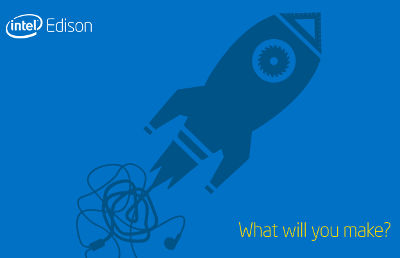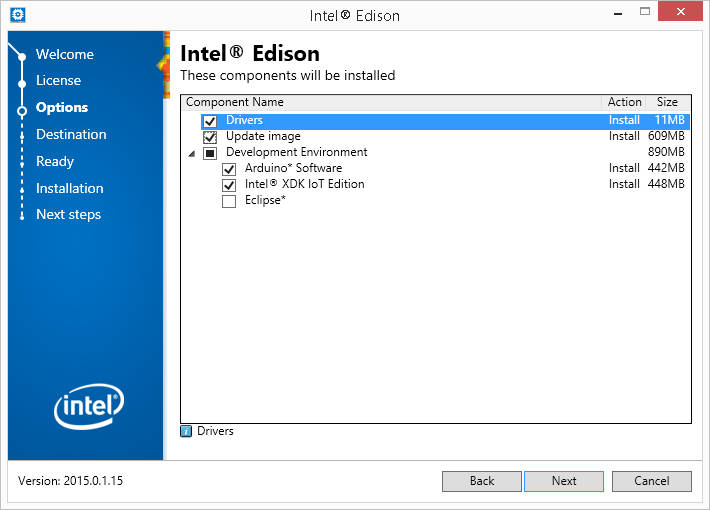| Intel IoT Dev Kit Reaches v1.0 |
| Written by Harry Fairhead | |||
| Friday, 06 March 2015 | |||
|
Intel finally manages to get Version 1 of its IoT Dev Kit out of the door and it is well worth having. However, it can't return the time wasted by developers who struggled with the less-than-perfect beta.
In a blog announcing the version 1 of the IoT kit, Ajay Mungara tries to put a positive spin on the long wait for software that made getting started with Intel's two main IoT offerings - the Galileo and the Edison - such a struggle: "I am super glad that we decided to expose our developers to the beta version (in Sept '14) as opposed to waiting to finish up the rough edges. We were able to gather tons of feedback (good, bad and ugly) on the beta product - the valuable input we directly used to improve the product and bring you the release v1.0. Listening to you and focusing on what you cared the most helped us "prioritize" the features that we are building." Well yes - this is what a beta is all about, but this particular beta was a mess and required users, many complete beginners, to jump through all sorts of hoops to get their development boards working. Multiple drivers had to be downloaded and installed manually, then the OS image had to be downloaded and installed, not to mention various components of the GPIO library and other development software. Each step wasn't particularly difficult, but knowing what you needed and why was confusing. In particular, the attractive mini breakout board for the Edison was practically ignored, both in the documentation and in the software. Getting it going was particularly tough. Now we have a polished single installer for all you need to get started. A beta is a way to find out what is required, but surely Intel must have known before being told by frustrated developers that a single installer was a really, really good idea.
If you want to do more than work with the Arduino IDE and Arduino breakout board you still have some manual work to do - establishing a serial console connection and configuring the WiFi. I really can't see why the installer doesn't offer a way to do this as well, but I guess you have to be on your own at some point. Putting aside the damage done by the poor initial software and documentation what about the fresh start? At first examination it all looks good! The installer works and makes getting setup a matter of just selecting a few options and waiting. The C/C++ support is much better with easy Eclipse setup and some new templates for different project types. The really good news is that there is support for a lot more sensors, more than 70, in the UPM library - which in turn makes use of the libmraa library to access the GPIO. These are full object-oriented implementations - you instantiate a sensor object, TH02 say, and then use methods like getTemperature and so on. There is good documentation on the Intel IoT website on the software side of using the sensors. The hardware aspects are up to you. But if you are looking for 1.8V devices that can work directly with the Edison without level shifting then you are going to have to read through until you find one, if you can find one. Another big improvement is that the mini breakout board is now supported. As the blog says: "I know you must be thinking why we did not support this to begin with - I agree. For multitude of reasons we could not get to this for the beta release, so we did it now." A lot of people were attracted to the Edison because it was small and turning it into an Arduino has never seemed to be its strong point. So imagine the shock when you have your new Edision and mini breakout board and discover that the software doesn't support it! The mraa library finally did catch up, but you still had to find out for yourself how it all worked. A final improvement is that the Wyliodrin visual programming language now works with the Edison. What is surprising about all of this is that when Intel produced a small attractive device - the Edison - it went on to emphasize the fact that you can plug it into a huge board and use it as an Arduino with WiFi. This is not really Edison's strong point and what is really required is support for using it in "native" mode and this means more help with the 1.8V logic problem as well as the mini breakout board. The Edison is potentially a winning IoT device but Intel is only slowly providing the support needed to make it so.
More InformationIntel IoT Developer Kit v1.0 is here Related ArticlesIntel's New Edison Is As Small As A Postage Stamp Exploring Edison - Meet Edison Exploring Edison - Setting Up The Breakout Boards (to be updated)
To be informed about new articles on I Programmer, install the I Programmer Toolbar, subscribe to the RSS feed, follow us on, Twitter, Facebook, Google+ or Linkedin, or sign up for our weekly newsletter.
Comments
or email your comment to: comments@i-programmer.info
|
|||
| Last Updated ( Thursday, 21 May 2015 ) |



